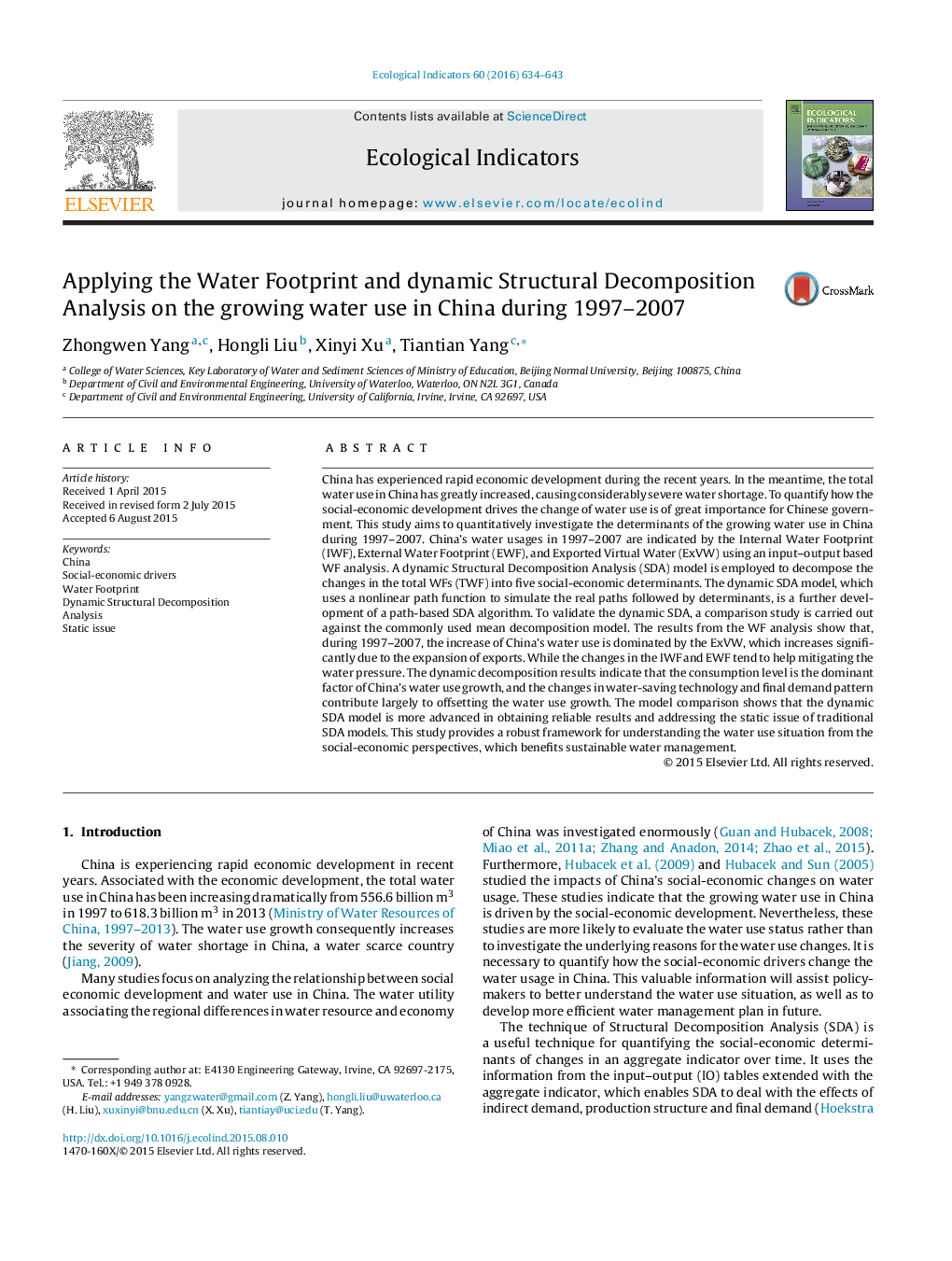| کد مقاله | کد نشریه | سال انتشار | مقاله انگلیسی | نسخه تمام متن |
|---|---|---|---|---|
| 6294123 | 1617141 | 2016 | 10 صفحه PDF | دانلود رایگان |
عنوان انگلیسی مقاله ISI
Applying the Water Footprint and dynamic Structural Decomposition Analysis on the growing water use in China during 1997-2007
ترجمه فارسی عنوان
استفاده از ریزش آب و تجزیه ساختاری پویای ساختاری در مورد مصرف آب در حال رشد در چین طی سال های 1997-2007
دانلود مقاله + سفارش ترجمه
دانلود مقاله ISI انگلیسی
رایگان برای ایرانیان
کلمات کلیدی
چین، رانندگان اجتماعی و اقتصادی، ردیاب آب، تجزیه تجزیه ساختاری پویا، مسئله استاتیک،
موضوعات مرتبط
علوم زیستی و بیوفناوری
علوم کشاورزی و بیولوژیک
بوم شناسی، تکامل، رفتار و سامانه شناسی
چکیده انگلیسی
China has experienced rapid economic development during the recent years. In the meantime, the total water use in China has greatly increased, causing considerably severe water shortage. To quantify how the social-economic development drives the change of water use is of great importance for Chinese government. This study aims to quantitatively investigate the determinants of the growing water use in China during 1997-2007. China's water usages in 1997-2007 are indicated by the Internal Water Footprint (IWF), External Water Footprint (EWF), and Exported Virtual Water (ExVW) using an input-output based WF analysis. A dynamic Structural Decomposition Analysis (SDA) model is employed to decompose the changes in the total WFs (TWF) into five social-economic determinants. The dynamic SDA model, which uses a nonlinear path function to simulate the real paths followed by determinants, is a further development of a path-based SDA algorithm. To validate the dynamic SDA, a comparison study is carried out against the commonly used mean decomposition model. The results from the WF analysis show that, during 1997-2007, the increase of China's water use is dominated by the ExVW, which increases significantly due to the expansion of exports. While the changes in the IWF and EWF tend to help mitigating the water pressure. The dynamic decomposition results indicate that the consumption level is the dominant factor of China's water use growth, and the changes in water-saving technology and final demand pattern contribute largely to offsetting the water use growth. The model comparison shows that the dynamic SDA model is more advanced in obtaining reliable results and addressing the static issue of traditional SDA models. This study provides a robust framework for understanding the water use situation from the social-economic perspectives, which benefits sustainable water management.
ناشر
Database: Elsevier - ScienceDirect (ساینس دایرکت)
Journal: Ecological Indicators - Volume 60, January 2016, Pages 634-643
Journal: Ecological Indicators - Volume 60, January 2016, Pages 634-643
نویسندگان
Zhongwen Yang, Hongli Liu, Xinyi Xu, Tiantian Yang,
